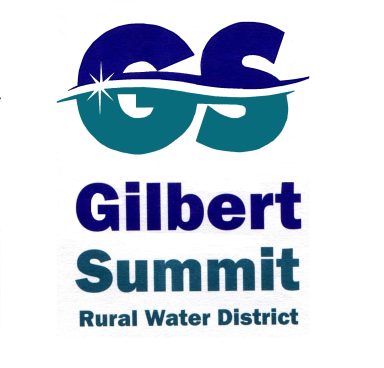Scroll down for the following topics:
- FAQs
- Backflow Protection--Now With Aqua Backflow, Inc.
- Employment Opportunities
- Forms
- Policies
- Water Saving Tips
- Drought Management Plan and Response Ordinance
Frequently Asked Questions
Billing Questions:
- When is my bill due? Bills are mailed at the end of the month and are due by the 10th of the following month. Failure to receive a bill does not relieve your responsibility to pay by the due date. If you do not receive a bill, call the office during normal work hours at 892-5544.
- When do you disconnect water for non-payment? If a bill is unpaid after the 20th of the month, it will be disconnected. Nonpayment can result in additional charges and disconnection of service without further notice. Previous balance and fees must be paid in order to restore service.
- What are the reconnection fees? During business hours: $50 first time; $75 second time: $100 thereafter. Non-business hours: $150 with no waiver by the Board.
- Can Field Staff employees take my payment? No. All payments must be made by one of the options listed below.
- What are my payment options?
- Mail check or money order along with your payment stub directly to:
GSRWD
P.O. Box 172
Gilbert, SC 29054
- In Person: Pay by check, money order, cash, credit or debit card, at our physical address below during office hours. Please bring your bill with you.
136 Hampton St
Gilbert, SC 29054
Office Hours
Monday – Thursday 8:00 a.m. to 5:00 p.m.
Friday 8:00 a.m. to 4:00 p.m.
- Drop Box: Pay by check or money order by placing your payment in our after hours drop box beside the main entrance at the office's physical location, 136 Hampton St., Gilbert.
- Online Payment: Go to website, www.gsrwater.com and click on Tab "Pay My Bill".
- Direct payment (ACH Bank Draft) Contact the Customer Service Department for information (803) 892-5544.
- By Telephone: Call our office at (803) 892-5544 to make a credit card or debit card payment over the phone. Listen to the options and select the appropriate number. Please have all your information ready in order to process the payment (water bill account number, card number, expiration date, and card billing ZIP). PLEASE NOTE: When entering your water account number on the phone, ignore the dashes entering all digits consecutively followed by the # key - e.g. 00000000000#
Technical Questions:
- Who maintains my cut-off valve? The District installs the original cut-off valve , usually within 12 inches of the meter box. The maintenance, repair or replacement of this valve is the responsibility of the customer.
- Who maintains my Pressure Reducing Valve? This, like the cut-off valve, is the customers responsibility. Basically, anything on the customer's side of the meter is the customers responsibility.
- How do I cut off my water supply? The District installs a customer cut-off valve on the customer's side of the water meter usually within 12 inches distance. These often get covered over the years, but a little digging should expose the valve.
- How do I adjust my pressure reducing valve? The valve is normally factory preset to 50 psi. The pressure may be adjusted up or down by turning the adjustment bolt - Clockwise to raise pressure or counterclockwise to lower the pressure. See Installation and Maintenance Instructions by clicking on this link.
Backflow Protection--Now With Aqua Backflow, Inc. http://www.aquabackflow.com
All connections to the Gilbert-Summit Rural Water District's water system must be protected by a minimum Residential Dual Check Valve. This is to protect and maintain the water system so as to continuously provide safe and potable water in sufficient quantity and pressure, and to be free from potential hazards to the health of its customers.
Lawn Irrigation Sprinkler Systems
If a simple low hazard lawn irrigation sprinkler system is installed the following testable devices must be installed and tested annually: double check valve assembly (DCVA), pressure vacuum breaker assembly (PVBA), or an atmospheric vacuum breaker (AVB). If chemicals are aspirated or injected into lawn irrigation systems or there is an unapproved auxiliary water supply tied into lawn irrigation sprinkler systems, this type of system will be considered a high hazard cross connection; therefore, the only acceptable protective devices will be a reduced pressure principle backflow assembly (RPBA) or an approved air gap separation.
The customer is responsible to have the device tested. A Test Form will be mailed out annually near the time that the test is due. The completed test form documenting the satisfactory operation of the device (including repairs if needed) must be returned to the Water District office where it will be kept on file.
For a current list of SCDES Certified General Backflow Testers (listed by county), click button below.
Employment Opportunities
Thank you for your interest but all positions are currently filled.

Water Saving Tips
A continuous leak wastes an amazing amount of water. Check out this chart!
Dia Hole at 60 PSI Gallons/Month Daily Average
1/4 inch 393,600 13,122
3/16 inch 217,300 7,244
1/8 inch 98,600 3,288
1/16 inch 24,600 822
Drinking water
- Cool drinking water in refrigerator or with ice, not by running tap
- Use leftover drinking water for pets or to water plants
Kitchen
- Use a vegetable brush to speed cleaning food
- Spray water in short bursts
- Faucet aerators cut water consumption
- Don't use running water to defrost food. Plan ahead to defrost overnight in the refrigerator, use a microwave or put wrapped food in a bowl of cold water
- Limit dishwasher use to full loads
- Use a rubber spatula to scrape dishes clean to limit pre-rinse
Bathroom
- Don't let the water run while you brush your teeth
- An electric shaver saves the most
- Filling the tub uses about 50 gallons of water - try bathing in just 10 gallons
- Plug the bathtub and start the hot water; wait to add cold water until the water in the tub has reached the right temperature
- When you've finished bathing, use the bath water to clean the tub
- Install a low-flow showerhead and keep showers under five minutes
- Turn off the water to soap up
Toilet
- Avoid using the toilet as a wastebasket
- Every flush you can avoid saves between 2 - 7 gallons of water
- To test if the toilet flapper valve is leaking add a few drops of food coloring to the toilet tank. If it's leaking, the coloring will appear in the toilet without flushing.
- Install a water efficient toilet
Landscaping
- Mulch to retain water
- Plant hardy, water-saving plants, trees, and shrubs, particularly native species
- Aerate lawns
- Mow less frequently in dry times
- Landscaping benefits most from slow, thorough, infrequent watering
- Minimize evaporation by watering in early morning or evening
- Install drip irrigation and automatic timers
Car Washing
- Use a shut-off nozzle and wash your car in small sections
- Direct run-off to water landscaping
Drought Management Plan
and Response Ordinance
During dry periods when little or no rain is prevalent, the South Carolina State Climatology Office may issue continuous updates on drought conditions throughout the state. As a result, all water utilities are required to have a Drought Management Plan in place, offering solutions to help mitigate unnecessary water usage during times of Insipient, Moderate, Severe, and Extreme drought conditions.
Click the link below for a downloadable copy of the Drought Management Plan and Response Ordinance for the Gilbert-Summit Rural Water District, revised June 25, 2024.

